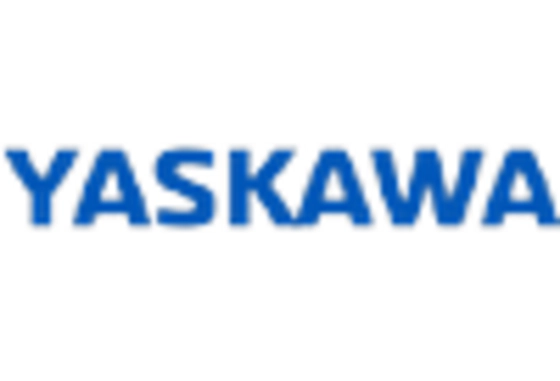Rising Demand for Automation
The Collaborative Robots Market is experiencing a notable surge in demand for automation across various sectors. Industries such as manufacturing, logistics, and healthcare are increasingly adopting collaborative robots to enhance productivity and efficiency. According to recent data, the automation market is projected to grow at a compound annual growth rate of approximately 25 percent over the next five years. This trend indicates a shift towards more automated processes, where collaborative robots play a crucial role in streamlining operations. As businesses seek to reduce labor costs and improve output quality, the integration of collaborative robots becomes a strategic imperative. The Collaborative Robots Market is thus positioned to benefit from this growing inclination towards automation, as companies recognize the potential of these robots to complement human workers and optimize workflows.
Growing Focus on Workforce Augmentation
The Collaborative Robots Market is witnessing a growing emphasis on workforce augmentation as businesses seek to enhance their operational capabilities. Collaborative robots are increasingly viewed as tools that can complement human labor rather than replace it. This perspective is particularly relevant in sectors facing labor shortages or high turnover rates. By integrating collaborative robots into their operations, companies can alleviate the burden on human workers, allowing them to focus on more complex tasks that require critical thinking and creativity. The market data suggests that the demand for collaborative robots is likely to rise as organizations recognize the benefits of augmenting their workforce with these versatile machines. This trend not only improves efficiency but also contributes to employee satisfaction, as workers can engage in more meaningful and less repetitive tasks within the Collaborative Robots Market.
Enhancement of Human-Robot Collaboration
The Collaborative Robots Market is significantly influenced by advancements in human-robot collaboration technologies. As organizations strive to create safer and more efficient work environments, the development of robots that can work alongside humans without compromising safety is paramount. Recent innovations in sensor technology and artificial intelligence have enabled collaborative robots to better understand and respond to human actions. This enhancement fosters a more intuitive interaction between humans and robots, thereby increasing productivity. The market for collaborative robots is expected to expand as companies prioritize the integration of these advanced collaborative systems. The ability of collaborative robots to adapt to various tasks and environments further solidifies their role in the Collaborative Robots Market, making them indispensable in modern workplaces.
Expansion of E-commerce and Logistics Sectors
The Collaborative Robots Market is experiencing growth driven by the expansion of e-commerce and logistics sectors. As online shopping continues to gain traction, the demand for efficient warehousing and order fulfillment solutions has surged. Collaborative robots are being deployed in warehouses to assist with tasks such as picking, packing, and sorting, thereby streamlining operations and reducing delivery times. Market analysis indicates that the logistics sector is projected to grow significantly, with collaborative robots playing a pivotal role in meeting the increasing demands for speed and accuracy. This trend highlights the adaptability of collaborative robots in various applications, making them essential assets in the Collaborative Robots Market. As e-commerce continues to evolve, the reliance on collaborative robots is expected to increase, further solidifying their position in the logistics landscape.
Increased Investment in Research and Development
The Collaborative Robots Market is benefiting from heightened investment in research and development initiatives aimed at enhancing robot capabilities. Companies are allocating substantial resources to innovate and improve the functionality of collaborative robots, focusing on areas such as machine learning, vision systems, and dexterity. This investment is crucial for developing robots that can perform a wider range of tasks and adapt to various industrial environments. As a result, the Collaborative Robots Market is likely to see a proliferation of advanced robotic solutions that meet the evolving needs of businesses. The emphasis on R&D not only drives technological advancements but also fosters competitive advantages for companies that adopt these innovations early. This trend indicates a robust future for collaborative robots as they become increasingly sophisticated and capable of addressing complex challenges in diverse industries.
















Leave a Comment